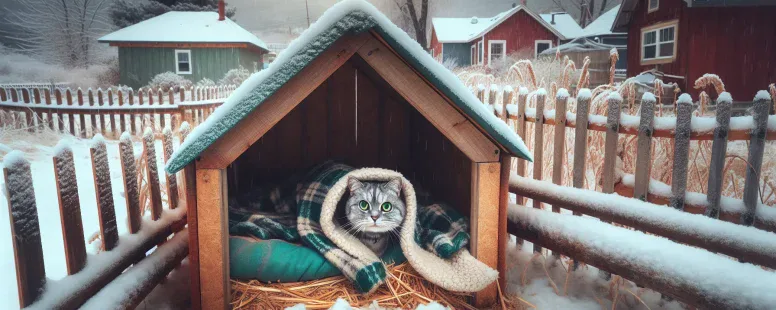Do Cats Have Kittens in the Winter?
whether the chillier months impact a cat’s ability to reproduce? Understanding the nuances of feline breeding behavior, especially in the winter season, unveils fascinating aspects of nature. Cats, being creatures deeply attuned to their environment, exhibit intriguing patterns in their reproductive cycles. This article delves into the connection between cat breeding habits and seasonal changes, offering insights for cat owners and enthusiasts alike.
Understanding the Breeding Patterns of Cats
Factors Influencing Seasonal Breeding Behavior
Cats, especially domestic ones, have evolved as seasonal breeders, with their natural reproductive rhythms being influenced by daylight hours and climatic conditions. In nature, the duration of daylight, also known as the photoperiod, plays a significant role in stimulating a cat’s reproductive hormones. This phenomenon often results in a peak breeding season during the spring and summer when days are longer. But, certain cats, particularly those living indoors in controlled environments, may not adhere strictly to these patterns due to exposure to artificial lighting which can mimic extended daylight hours.
How Environmental Changes Affect Cat Reproduction
Environmental factors further influence a cat’s breeding behavior. For feral and outdoor cats, colder temperatures and shorter daylight hours in winter typically signal less optimal conditions for raising a litter, leading to reduced reproductive activity. Contrarily, the consistent and shielded conditions experienced by indoor cats often neutralize these natural deterrents, enabling them to breed year-round. Genetic predispositions and health factors also interplay to determine how adaptable each cat’s reproductive cycle may be to seasonal shifts.
Challenges of Caring for Kittens in Winter
Ensuring the Welfare of Kittens During Cold Months
Successfully raising kittens during the colder months demands extra measures to maintain their health and comfort. Since young kittens cannot regulate their body temperature efficiently, providing a consistently warm and sheltered environment becomes paramount. Consider using high-quality insulation materials for bedding or heated pet pads to shield them from the cold.
Preventative Measures for Stray and Feral Cats
For stray or feral kittens and their mothers, winter poses significant survival challenges. Compassionate interventions, such as setting up sheltered enclosures equipped with straw bedding or providing access to food and water sources that prevent freezing, can make a substantial difference. Community collaboration can also aid in implementing Trap-Neuter-Return (TNR) programs, which help manage feral populations while preventing the birth of kittens during unsuitable conditions.
How to Prepare for Kittens in Cold Weather
Planning adequately when expecting kittens in winter months ensures you readily support their unique needs. Equip the nursery space with warming elements to prevent hypothermia and create a haven mimicking the safe confines of a nest. Stock basics such as nourishing food, appropriate for both the nursing mother and growing kittens, and necessary veterinary supplies. Monitor them diligently for signs of health concerns, and promptly address any issues with the assistance of professionals.
- What to Do If You Find a Dead Cat in Your Yard - November 16, 2025
- How Long Can a Dog Go Without Water? - November 16, 2025
- Where Can I Promote a Home-Based Garden Service? Top Online & Offline Strategies to Grow Your Business - November 16, 2025




